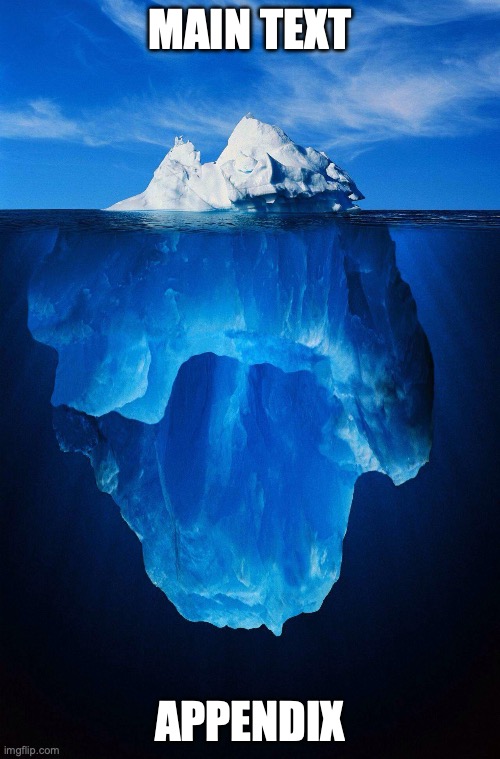this post was submitted on 21 Mar 2024
223 points (99.1% liked)
Science Memes
11597 readers
1637 users here now
Welcome to c/science_memes @ Mander.xyz!
A place for majestic STEMLORD peacocking, as well as memes about the realities of working in a lab.

Rules
- Don't throw mud. Behave like an intellectual and remember the human.
- Keep it rooted (on topic).
- No spam.
- Infographics welcome, get schooled.
This is a science community. We use the Dawkins definition of meme.
Research Committee
Other Mander Communities
Science and Research
Biology and Life Sciences
- [email protected]
- [email protected]
- [email protected]
- [email protected]
- [email protected]
- [email protected]
- [email protected]
- [email protected]
- [email protected]
- [email protected]
- [email protected]
- [email protected]
- [email protected]
- [email protected]
- [email protected]
- [email protected]
- [email protected]
- [email protected]
- [email protected]
- [email protected]
- [email protected]
- [email protected]
- [email protected]
- [email protected]
- !reptiles and [email protected]
Physical Sciences
- [email protected]
- [email protected]
- [email protected]
- [email protected]
- [email protected]
- [email protected]
- [email protected]
- [email protected]
- [email protected]
Humanities and Social Sciences
Practical and Applied Sciences
- !exercise-and [email protected]
- [email protected]
- !self [email protected]
- [email protected]
- [email protected]
- [email protected]
Memes
Miscellaneous
founded 2 years ago
MODERATORS
you are viewing a single comment's thread
view the rest of the comments
view the rest of the comments

No need to rush to conclusions, I do read appendices when needed. My point is not that authors should cut the appendices or compromise on any other good open science practices. The point is that disproportionately large appendices make one wonder if some of that stuff actually belongs in the main text. If it is just a robustness check that gives a similar result, fine, make a footnote in the main text and put the analysis in the appendix. But what if it is actually relevant information that changes the perception of the main text?
That's why you need the appendices, so that you can check the details behind what is in the paper.
Journals have word limits, due to the restrictions of print, and because a 200 page paper is too much for most readers. But some of them will need some or all of those 200 pages (which is usually a shed load of tables and figures, not much text apart from protocols etc).
The quality of the research, and the way it was written up, cannot be assessed by those readers unless all the information is published. And the research cannot be implemented in practice unless it is described in full. There are thousands of papers out there that test a new treatment but don't give enough detail about the treatment for anyone else to deliver it. Or develop a new measurement scale but don't publish the scale. Or use a psychometric instrument but don't publish the instrument. This research is largely useless (especially if the details were never archived properly and there's no one still about who knows how to fill the gaps).
We don't (or should not) publish papers for CV points. We publish them so that other researchers know what research has been done and how to build on it. These days we don't just publish all the summary tables and all the analyses, we ideally make the data available too. Not because we expect every reader to want to reanalyse it but because we know some of them will need to.